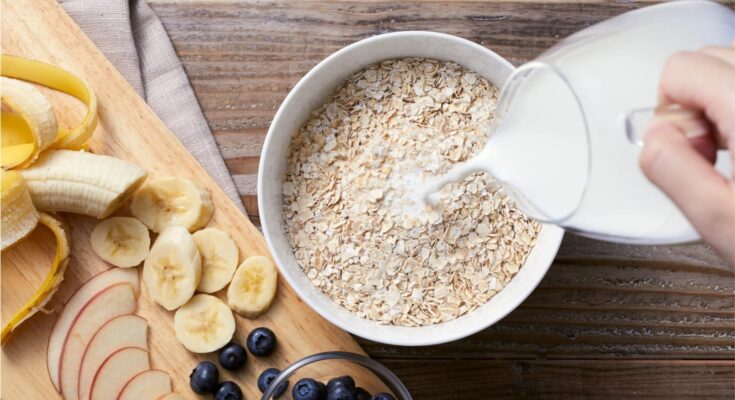Carbohydrates are one of the most important sources of energy in the human diet. Besides providing fuel for the body, small amounts of certain carbohydrates are also found in complex tissue lipids. The most significant carbohydrates in our diet include starch, sucrose, lactose, glucose, fructose, and galactose.
Carbohydrates can contribute anywhere from 40% to 80% of daily energy needs, depending on dietary habits across different countries. Experts recommend that at least 40% of daily energy should come from carbohydrates because they are not only effective but also the most affordable source of energy.
Types of Carbohydrates and Their Importance in the Diet
Let’s break down the different types of carbohydrates commonly found in food:
Starch
Starch is mainly found in cereals, roots, and tubers, which are staple foods in many cultures. When we cook and eat starchy foods, the starch gets broken down into maltose and then into glucose in the digestive system.
The speed at which starch is digested can vary depending on the food source. For example, ragi (finger millet) digests more slowly than rice due to its fiber content. This is important for people with diabetes, as slow-digesting starches help prevent blood sugar spikes.
Benefits of starch as a carbohydrate source:
It’s widely available and affordable
Has a bland taste, making it versatile in cooking
Is slowly digested, which helps control blood sugar levels
Provides a feeling of fullness, reducing hunger
Sucrose
Sucrose is the common sugar we add to tea, coffee, and desserts. In the body, it breaks down into glucose and fructose, which are then stored as glycogen in the liver.
Although sweet, sucrose is usually consumed in moderation—about 30 to 70 grams per day. That’s just around 10% of total daily carbohydrate intake, which is considered safe for most adults. However, overconsumption, especially in the form of sticky sweets or candies, can lead to tooth decay due to acid production by bacteria in the mouth.
Lactose
Lactose is found only in milk and dairy products. Human milk contains about 7% lactose, while cow or buffalo milk contains around 4.5%.
When digested, lactose splits into glucose and galactose. Galactose is converted into glycogen, and lactose also helps in the absorption of calcium and phosphorus, thanks to its fermentation in the gut by lactic acid bacteria.
Lactose doesn’t cause a quick rise in blood sugar, making it a gentle source of energy. Research has shown that lactose raises blood sugar more slowly than glucose, honey, or sucrose.
The amount of lactose we consume daily from milk is much smaller and safe. When milk is turned into curds, the glucose part of lactose gets fermented into lactic acid, leaving galactose in the curd.
Glucose and Fructose
These natural sugars are found in small amounts in fruits and honey. Glucose, in particular, is used in hospitals and during recovery as it is easily absorbed and quickly provides energy.
Conclusion
Carbohydrates are a vital part of a balanced diet. While starch is the primary and most beneficial form of carbohydrate due to its slow digestion and satiety value, natural sugars like glucose and fructose also have their place, especially in fruits and medical nutrition. Consuming moderate amounts of sucrose and lactose is generally safe and contributes to overall health—especially when they come from whole foods like milk, fruits, and grains.




